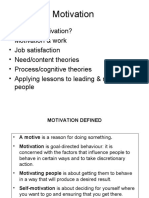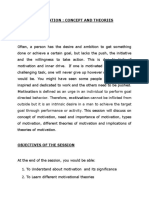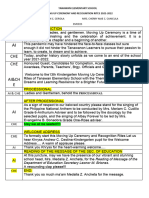0% found this document useful (0 votes)
32 views5 pagesManagement & Motivation Essentials
The document discusses key management concepts including directing, coordination, controlling, motivation, leadership, and their importance in achieving organizational goals. It outlines principles of directing, types and theories of motivation, qualities of effective leaders, various leadership styles, and the control process in management. Additionally, it emphasizes the need for motivation and leadership in fostering a productive work environment and achieving success.
Uploaded by
TECH with AJ Digital worldCopyright
© © All Rights Reserved
We take content rights seriously. If you suspect this is your content, claim it here.
Available Formats
Download as PDF, TXT or read online on Scribd
0% found this document useful (0 votes)
32 views5 pagesManagement & Motivation Essentials
The document discusses key management concepts including directing, coordination, controlling, motivation, leadership, and their importance in achieving organizational goals. It outlines principles of directing, types and theories of motivation, qualities of effective leaders, various leadership styles, and the control process in management. Additionally, it emphasizes the need for motivation and leadership in fostering a productive work environment and achieving success.
Uploaded by
TECH with AJ Digital worldCopyright
© © All Rights Reserved
We take content rights seriously. If you suspect this is your content, claim it here.
Available Formats
Download as PDF, TXT or read online on Scribd
/ 5























































































